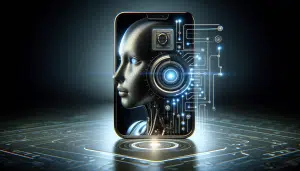Unlocking Everyday Benefits of Artificial Intelligence
Ethan Harris September 27, 2025
Artificial intelligence is transforming how people live, work, and connect. This guide explores AI in daily life, from smart assistants to healthcare advances, while demystifying common myths, privacy concerns, and what AI’s growth really means for the future.
Understanding Artificial Intelligence in Daily Life
Artificial intelligence (AI) is no longer a distant concept reserved for researchers and tech giants. It shapes many aspects of life, from voice assistants on smartphones to suggestion algorithms in streaming apps. In simple terms, AI refers to computer systems designed to perform tasks that once required human intelligence—like recognizing speech, interpreting images, translating languages, and even making recommendations based on user behavior. With each interaction, AI systems learn, adapt, and often improve, enabling them to become more accurate and helpful over time. This ability to evolve explains why so many companies and institutions are investing in AI research and implementation.
In homes, AI-enabled smart devices help organize schedules, automate climate control, and enhance security. Voice assistants such as Amazon Alexa or Google Assistant can answer questions, play music, control lights, and connect with other smart home gadgets, all using natural language. These AI-powered systems use natural language processing and sophisticated pattern recognition to deliver seamless user experiences. Observe how streaming services suggest movies you’ll probably enjoy—this too is AI in action, using data-driven insights to enhance viewing pleasure and boost engagement.
On a larger scale, AI technologies support sectors like banking, retail, healthcare, and transportation. Financial institutions rely on AI to detect fraud, tailor products, and improve customer service. AI’s broad reach results in more personalized experiences, faster service, and increased efficiency. The pervasive influence of artificial intelligence, from morning routines to commuting and entertainment, demonstrates how deeply integrated this technology has become in everyday modern society (Source: https://ai.google/research/).
Smart Assistants and Connected Devices
Smart assistants are one of the most visible faces of artificial intelligence. These digital helpers, powered by advanced machine learning, have made it easier than ever to manage everyday tasks. With a simple command, users can set reminders, send messages, track appointments, or adjust lights and thermostats. The quick response time of AI-powered assistants adds real convenience to busy lives and continues to expand as AI evolves (Source: https://developer.amazon.com/alexa).
Connected devices also offer benefits to households and workplaces. Smart sensors monitor energy usage, detect leaks, or trigger alerts for unusual activity. Homeowners enjoy greater security with AI-enabled cameras capable of distinguishing between familiar and unfamiliar faces. Wearable devices use AI to analyze activity levels and remind users to move, drink water, or take medication. By using these technologies, people experience greater control over daily routines, and frequently benefit from improved health and efficiency.
The convenience of smart devices extends to entertainment and productivity. AI curates music playlists according to mood, hours of the day, or recent listening habits. Smart speakers can provide real-time translations or assist with recipe measurements. Many people report that these devices free up time and lower stress, allowing them to focus on what matters most. It’s clear AI’s growth in consumer products is driven by a desire for smooth, effortless experiences that respect individual needs.
AI in Healthcare and Wellness
Artificial intelligence is dramatically changing the healthcare landscape, sometimes in ways not immediately visible to patients. Medical professionals use AI to interpret X-rays and MRI scans faster and with more precision, leading to earlier detection of diseases such as cancer or pneumonia (Source: https://www.nih.gov/news-events/nih-research-matters/artificial-intelligence-detects-cancer). AI streamlines patient scheduling, assists with the analysis of medical records, and helps determine proper treatment paths using deep data analysis.
Wearable technology guided by AI tracks heart rates, sleep cycles, and fitness activities. These continuous data streams offer insights that help individuals and healthcare providers monitor wellness and spot potential issues before they become serious. By making real-time personalized recommendations, AI-driven wellness apps can encourage healthier habits while alerting users about possible health risks—providing peace of mind and actionable feedback without needing regular checkups.
AI-powered chatbots now help people access reliable health information, book appointments, or remind them about medication schedules. They’re especially valuable for remote assistance in communities with limited healthcare access. In research settings, AI supports drug discovery and epidemiology, improving how quickly experts can respond to disease outbreaks. Real-world benefits include better patient care, lower costs, and improved outcomes (Source: https://www.cdc.gov/about/ai/index.html).
Addressing Privacy and Security in AI
As people invite AI into their homes and workplaces, concerns about data privacy and security become increasingly important. Most AI systems rely on collecting and analyzing personal information, often in real-time. This raises questions about how data is stored, who can access it, and for what purposes it might be used. Many organizations have enacted robust security frameworks to minimize risks, but users should still be aware of the permissions granted to each app or device (Source: https://www.nist.gov/artificial-intelligence).
Developers are creating more transparent AI systems that detail which types of data are collected and how that data is handled. Features such as encryption, two-factor authentication, and user control over stored information help reassure people who are wary of privacy invasions. Responsible AI regulation is emerging as both a business and ethical imperative, setting new industry standards to protect sensitive details and prevent misuse.
It’s also wise for users to routinely review device settings, perform security updates, and use trusted networks when connecting smart devices. By exercising digital mindfulness, individuals can better enjoy AI’s benefits while minimizing risks. The balance between innovation and privacy is critical—effective safeguards must continue to evolve as AI grows more advanced and integrated into everyday experiences.
Breaking Down Common Myths and Concerns
Artificial intelligence is often misunderstood, leading to myth and misinformation. One common fear is that AI will inevitably replace human jobs or make autonomous decisions unchecked. While automation can affect certain industries, it’s also true that AI enables new roles, assists professionals, and ultimately boosts productivity in many sectors (Source: https://www.brookings.edu/articles/how-artificial-intelligence-is-transforming-the-world/).
Another widespread myth is that AI operates without oversight. The reality is that the most effective AI systems combine human guidance with advanced algorithms, ensuring both ethical use and accuracy. Governing bodies, research groups, and tech leaders actively work to establish guidelines for the safe deployment of AI, preventing bias, and reviewing systems for potential errors. This collaborative approach keeps innovation in check while maximizing advantages for society at large.
Concerns about AI consciousness and science fiction scenarios tend to overshadow the real, proven applications making lives easier today. By staying informed and asking critical questions, people can focus on leveraging AI for personal benefit and continuous learning, instead of succumbing to often exaggerated fears. Openness, education, and critical thinking are the most reliable tools for understanding and thriving alongside artificial intelligence advancements.
Where AI Is Going Next
The pace at which AI evolves is impressive. New breakthroughs in natural language processing, robotics, and computer vision are now entering mainstream use. AI technologies like generative models, driver-assistance platforms, and automated translation services will become even more refined and accessible. Individuals and organizations prepared to adapt to these shifts can expect new opportunities in education, medicine, and communication (Source: https://www.technologyreview.com/).
Future trends also point to increased collaboration between humans and AI, especially in creative and analytical fields. The blend of machine efficiency with human intuition promises smarter cities, safer transportation, and sustainable resource management. Ongoing research in ethical AI, explainable algorithms, and cross-industry cooperation will keep the focus on inclusive, fair solutions for all.
For anyone interested in following AI developments, numerous educational resources are available from universities, research centers, and online platforms. Staying aware and engaged is the first step to understanding how future-ready skills, responsible AI practices, and new technologies can enhance quality of life. Learning about AI is not only interesting—it’s practical for addressing the challenges and opportunities of the digital era.
References
1. Google AI. (n.d.). Research. Retrieved from https://ai.google/research/
2. National Institutes of Health. (2022). Artificial intelligence detects cancer. Retrieved from https://www.nih.gov/news-events/nih-research-matters/artificial-intelligence-detects-cancer
3. Centers for Disease Control and Prevention. (n.d.). Artificial Intelligence at CDC. Retrieved from https://www.cdc.gov/about/ai/index.html
4. National Institute of Standards and Technology. (n.d.). Artificial Intelligence. Retrieved from https://www.nist.gov/artificial-intelligence
5. Brookings Institution. (n.d.). How artificial intelligence is transforming the world. Retrieved from https://www.brookings.edu/articles/how-artificial-intelligence-is-transforming-the-world/
6. MIT Technology Review. (n.d.). Artificial intelligence. Retrieved from https://www.technologyreview.com/







